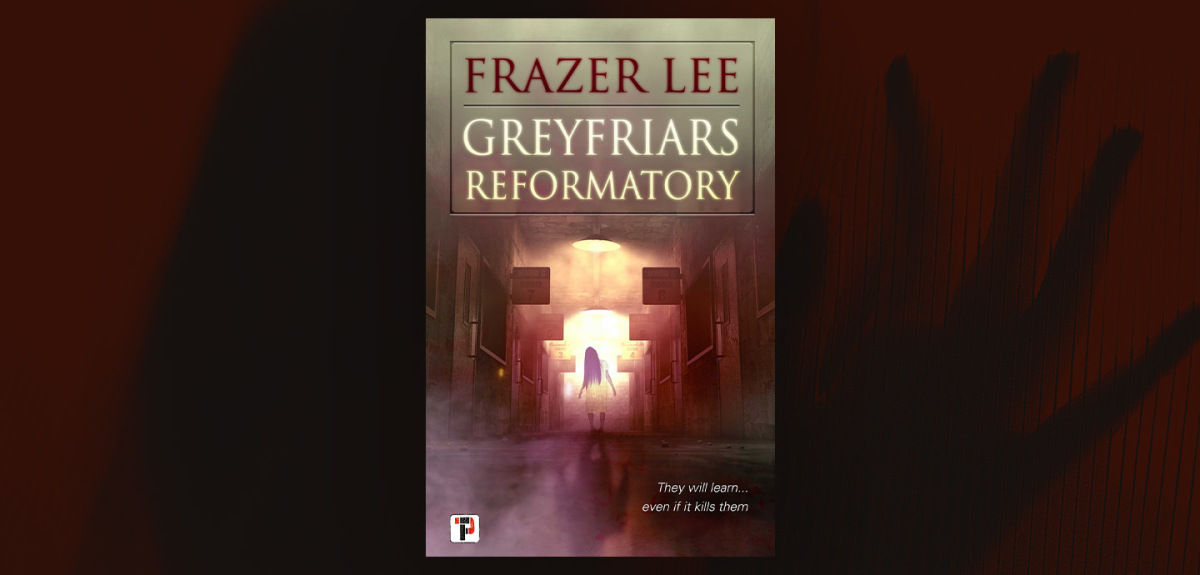[ad_1]
In Frazer Lee’s Greyfriars Reformatory, Emily Drake has no memory of what she did to get sent to the imposing brick institution she first sees looming before her through the window of a prisoner transport bus. It will be her prison until and unless she submits to experimental psychological treatment designed to cure her of a danger within herself of which she is not consciously aware. She’s among a group of shackled teen girls being shipped to Greyfriars for “rehabilitation.” In their lives outside, they were dismissed as hopeless, psychopathic screw ups. But at Greyfriars, they have the opportunity to heal and earn themselves a life beyond the institution’s lichen-laced walls if they only follow strict rules and ignore any spectral inmates who climb into bed with them at night.
This is the sixth novel by Lee, who is also a screenwriter and filmmaker. His novel, The Lamplighters was a Bram Stoker Award finalist for Superior Achievement in a First Novel. In his cinematic life, Lee has produced a feature called Panic Button, and his short film, Stay, won the Edgar Allan Poe Gothic Filmmaker of the Year Award.
Our confused heroine Emily has dissociative identity disorder, but not the kind you usually find in horror novels. She knows she has it, and informs you that she’s unreliable from the moment she starts telling her tale.
The group of new inmates Emily finds herself with are a mix of standard teen girl archetypes. The rich bully, the sensitive anorexic, the ragamuffin drug addict. The bully, Saffron, quickly appoints herself the boss and carefully catalogs each girl’s emotional wound to leverage for personal gain later.
Their health is in the hands of psychiatrist and head mistress Principle Quick—an icy disciplinarian straight out of central casting. She preaches that “Routine clarifies mind and body. Heals the soul.” The girls eat their slop and take their prescribed exercise when required, but as unnatural events trip up Quick’s plans for their rehabilitation, the girls find their chores include washing up blood and disposing of bodies. Emily and the others can only be free of this place if they win the approval of a psychiatrist capable of unforgivable cruelty.
Each girl’s formative trauma carries the weight of an injustice she shouldn’t have had to bear. Even the manipulative Saffron, perhaps the girl hardest to feel sympathy for, lashes out sadistically to mask the trauma of an intimate betrayal. Were it not for a few moments of adult themes and graphic gore, the novel could easily be shelved in the Young Adult section of a book store.
Greyfriars Reformatory delivers on suspense and a classic asylum setting that brings to mind novels like One Flew Over the Cuckoo’s Nest. The institution Emily longs to leave sits so far away from civilization that there isn’t any hope of an escaped inmate finding somewhere to run off to.
The novel’s greatest strength, though, is pacing. Perhaps Lee’s filmmaking experience informs the novel’s clipped pace. The supernatural events at Greyfriars treat the reader to way more ghost action than a single novel usually contains, and echo elements from Gore Verbinski’s The Ring, which was based on a 1998 Japanese film by the same name. Lee appeared to have the former in mind, as in one interview, the author mentioned listening to the soundtracks to the first two films in the Ring franchise while writing this novel.
Although many of the tropes of Greyfriars Reformatory risk being too familiar to a jaded horror fan, the teen characters are three-dimensional, and the story is anchored by a strong sense of atmosphere, which Lee might have a unique taste for. In real life, Lee resides in Buckinghamshire, England, across a cemetery from Hampden House, a mansion used by Hammer Film Productions as a headquarters and filming location for the 1980 Hammer House of Horror series.

FICTION
Greyfriars Reformatory
By Frazer Lee
Flame Tree Press
Published October 20, 2020
[ad_2]
Source link
